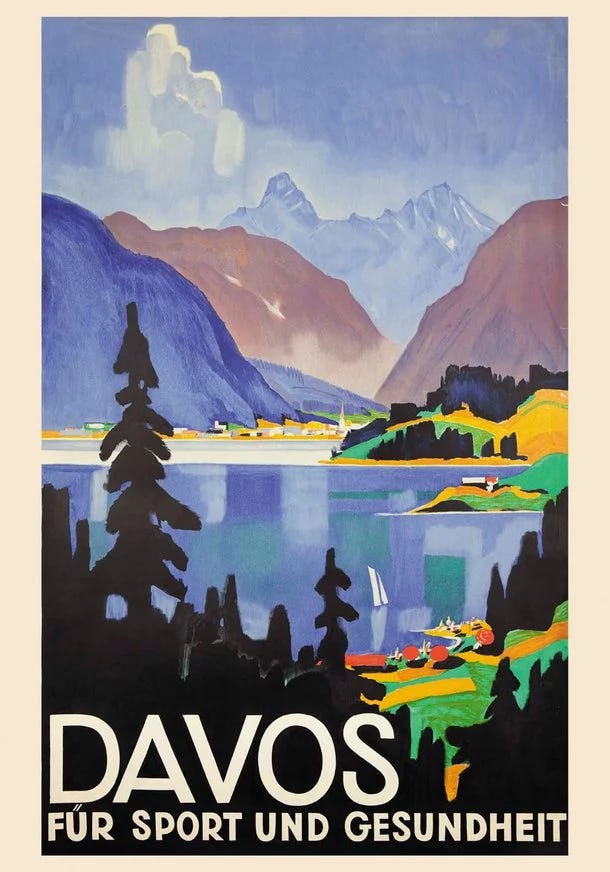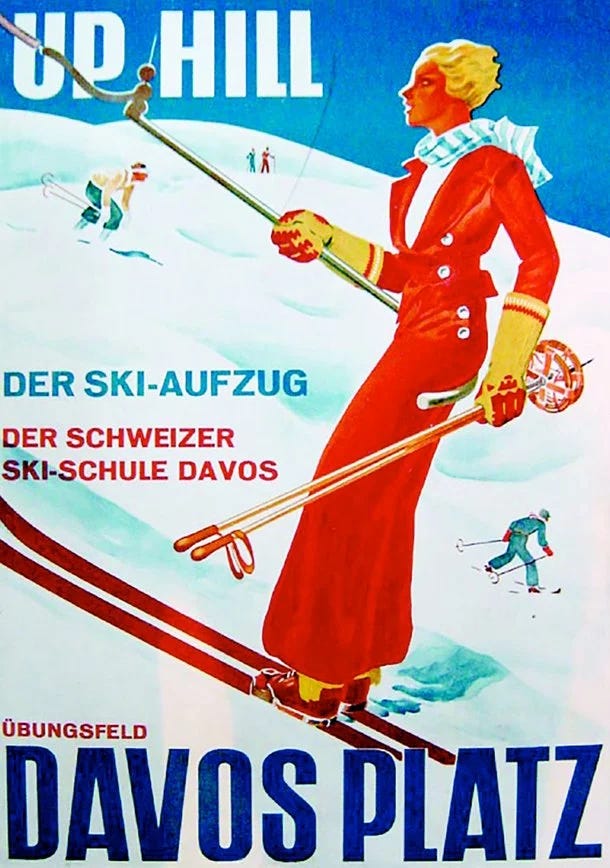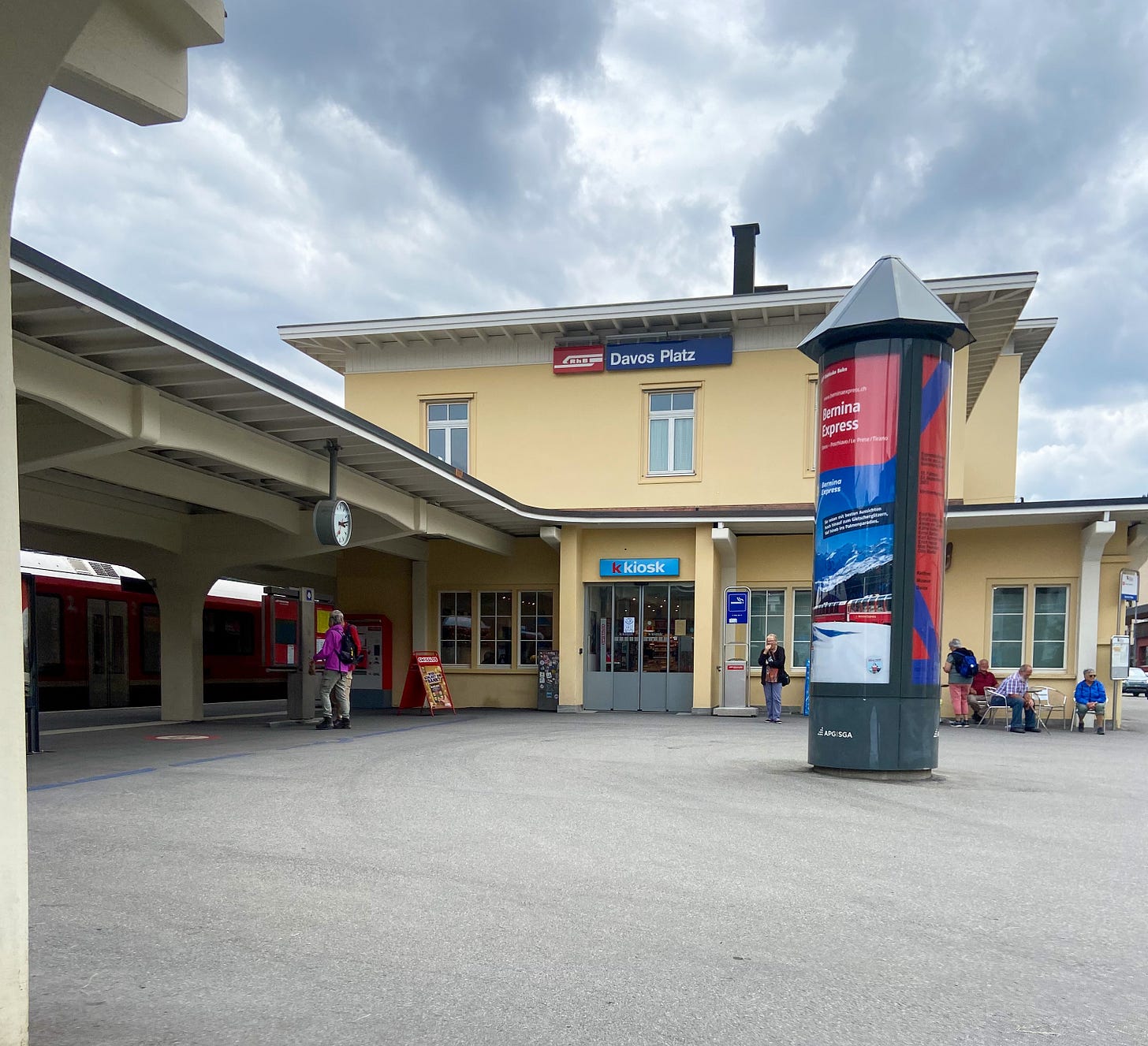Davos in the summer
A non-glamorous, non-touristy, unfiltered look at the famous Swiss ski-resort town

Wait, Davos in the summer???? But isn’t it famous for snow and skiing and the Annual Meeting of the World Economic Forum (WEF)?
In other words, winter???
Yes, it may seem that Davos, like many other Alpine towns, hibernates for most of the year, only to bloom in all its bright-eyed and bushy-tailed gloriousness during winter. In fact, if you do a Google image search on Davos, most of the pictures that turn up are either of the WEF conference, or shots of the town blanketed in white.
Like the picture above.
But there is a lot more to Davos than winter frolicking. I know, shocking, right? Again like many other Alpine towns, during the summer (and by summer I mean, not-winter), it is also a hiking and mountain biking destination. So there is plenty to do if you wish to explore the surrounding nature at any time of the year.
And yet despite all its natural wonders, and past history as a healing oasis, Davos is perhaps now best known for the WEF Annual Meeting, to the point where they have become synonymous. So in this post, I will focus on the town itself, with digressions into some of its history, and interesting nuggets about the region. Let me know your thoughts!
Davos and the infamous WEF Annual Meeting
OK, because it’s impossible to disentangle Davos from the WEF’s Annual Meeting, let’s get it out of the way, shall we?
Every January the world’s spotlight falls on Davos as it hosts the so-called “global elite”(i.e., representatives from governments, businesses, academia, anyone else able to pay the hefty fee wanting to be seen, and, of course the media from around the world). The humble goal of this conference is to bring together the public and private sectors to solve all of the world’s problems. Talk about setting a textbook S.M.A.R.T goal….
It’s like a meeting of the Olympian gods, where they argue over ambrosia and nectar about what is best for us mere mortals. Because of course, they know better. But not everyone who attends is equal. Oh no, status here is everything. Each attendee is assigned a particular colored badge that announces to everyone your rank in the pecking order.
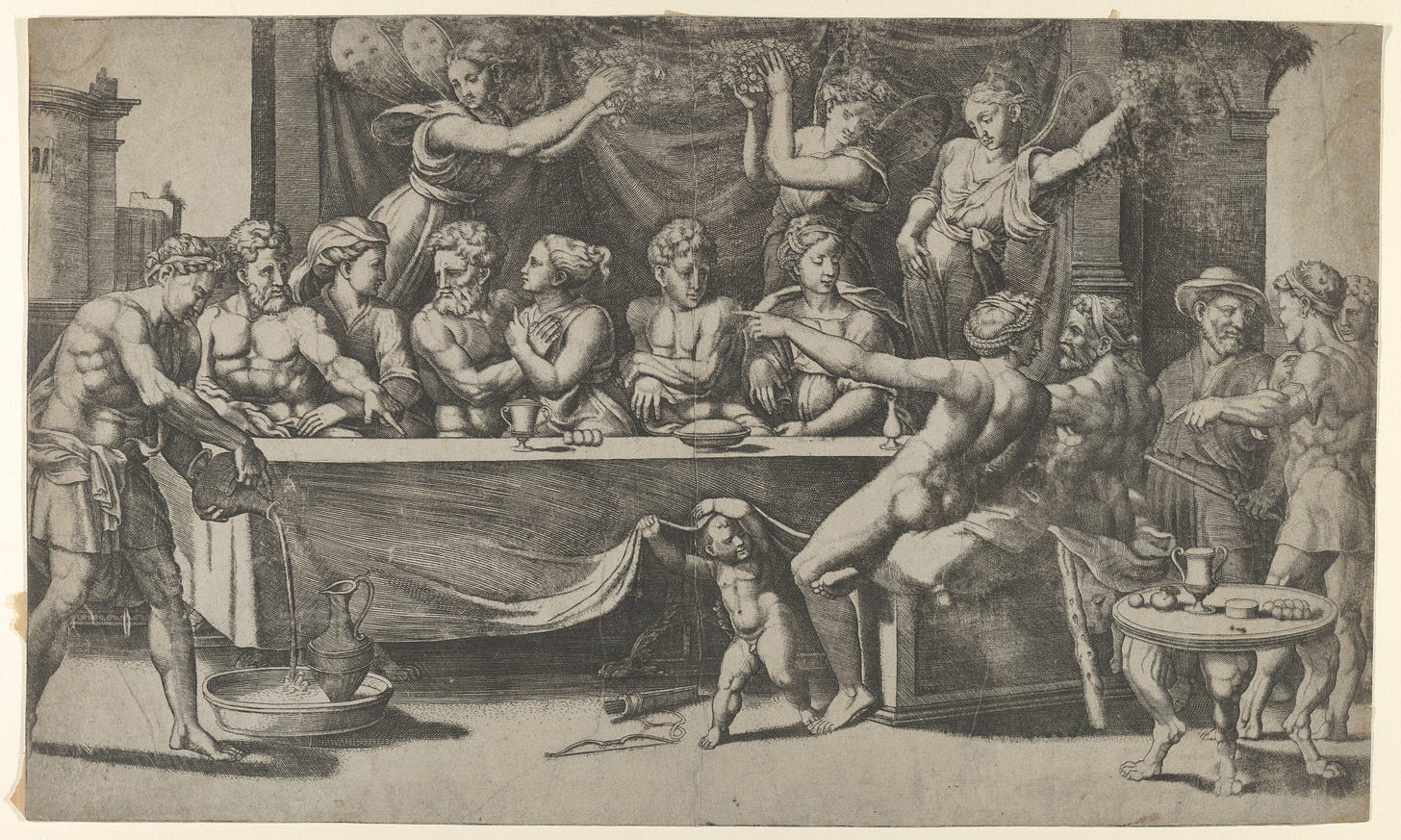
The Olympians get the coveted white badge, which gives them access to absolutely anywhere they want to go. Those next in line of importance get a different color and less privileges and a few closed doors, and they go down the line in that way through the primordial deities, the titans, the giants, the minor gods, the heroes, and so on. At the very bottom are the mere mortals, who get a badge that doesn’t even let you in the conference center….
I suppose you’re just paying for the privilege of having a badge as a souvenir, to be able to say that you were there? Do you get to stand outside, hands and nose pressed to the glass in hopes of catching a glimpse of your favorite Olympian??
The whole thing reminds me a lot of the academic Economics conferences I used to attend in my previous iteration, only snobbier and more luxurious. Picture lots of ego, puffed up chests, and inane presentations that don’t solve anything, along with arguments over minute details that make you ask yourself what the point actually is. All while pretending to know how us mortals actually live and what we want.
Just like those conferences, the WEF’s participants are mostly male. Apparently, this year the highest number of women attended, a “whopping” 28 percent. That is actually higher than the percentage of women full professors in Economics….
The meeting this year ran from January 15th to 19th, and I suppose it’s safe to say that they have not achieved their grandiose goal (hey, there’s always next year!). In fact, chances are no one even remembers what happened there. Not that many even know what went on during the event…. Though to be fair, I’m sure a lot more people were aware at the time of some of the people who attended. Only to promptly forget (I know I did!).

So now that we got the WEF out of the way, let’s explore the brave small Alpine town that every year turns, Cinderella-like, into a major power center, and specifically to my trip there in June of last year!!
But first, a little background…
In May of last year, I completed a tour of every single one of the 26 Cantons in Switzerland (and yes, expect future newsletters to focus on a town, or more than one town, in each Canton). And so in the following month, I decided to go back to where it all started for me, the Canton of Graubünden (also known as Grisons).
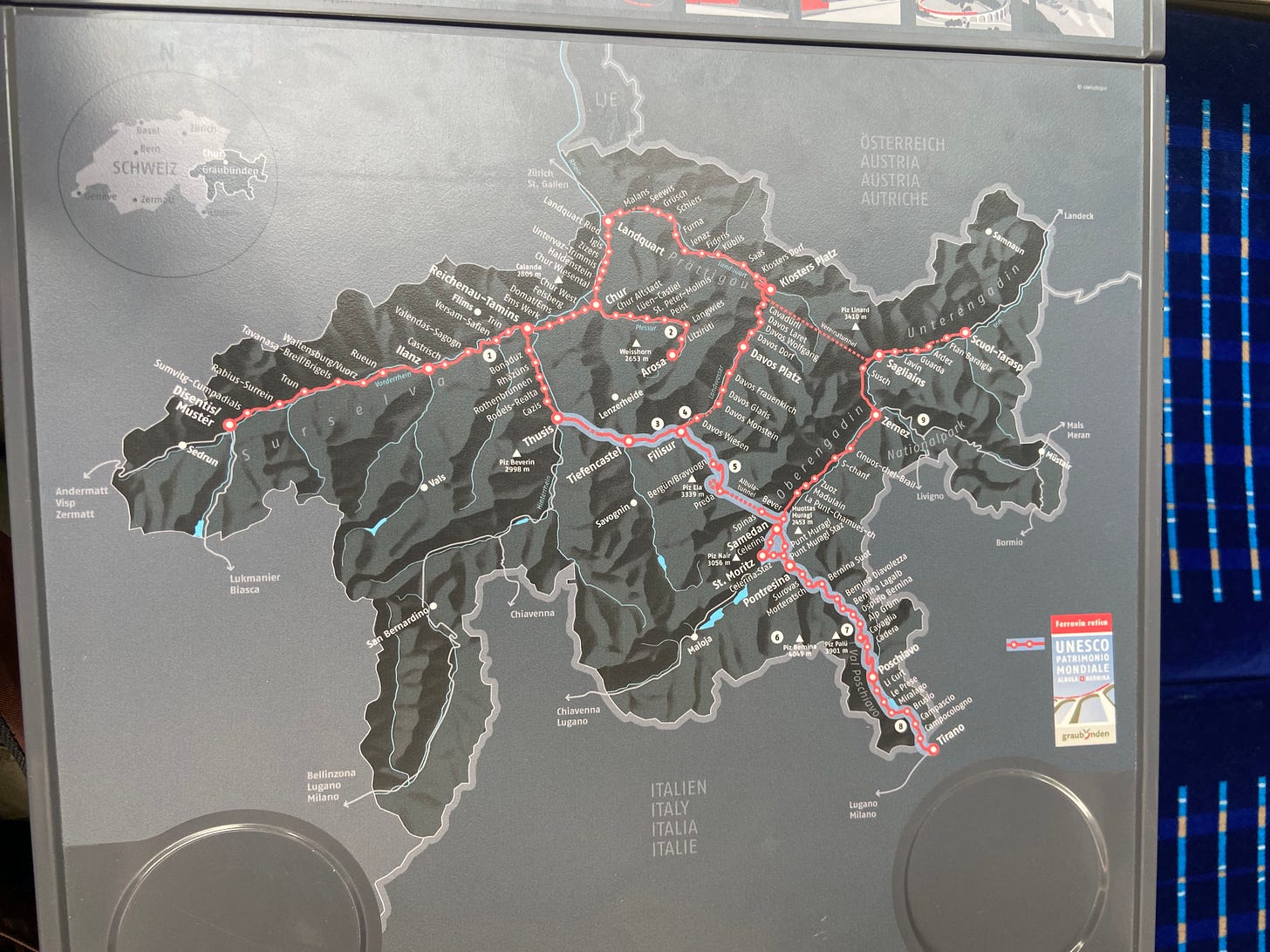
Of course this decision had nothing to do with the fact that I was melting in the summer heat in Zurich, and desperately needed to go somewhere higher up, where it was cooler….
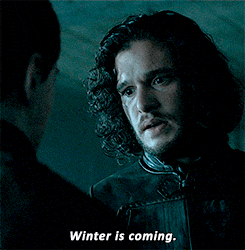
Graubünden was the very first Canton I ever visited in Switzerland. I landed in Zurich in July years ago (never imagining I’d end up living here), and got on the train to Chur (already in Graubünden—more on Chur below). Once there, I changed to a Rhätische Bahn to St. Moritz (maybe you’ve heard of it???). The 2-hour trip, part of which is through a UNESCO Heritage route, is stunning and breath-taking! The hype Switzerland gets over its natural beauty is very much well-deserved.
As if all this wasn’t enough after enduring a transatlantic flight from the U.S., in St. Moritz my luggage and I had to take a bus to my final destination, Silvaplana, located in the Upper Engadin. And yes, it was for an Economics workshop.
Turns out, I was in the Romansch-speaking region of Switzerland!
Now, as you may know, Switzerland has four official languages (though it doesn’t mean everyone can speak all the languages):
German (well, Swiss German, or more accurately, a Canton-specific dialect of German, which is spoken in most of the country. Someone from one Canton may not necessarily understand the dialect in another)
French (in the Cantons to the East, bordering France)
Italian (spoken only in Ticino, on the border with Italy, though I hear it all the time in Zurich)
Romansch (a Romance language, i.e., descended from Latin. And yes, there are different dialects…).
When you shop at the grocery store here in Zurich, you generally find the information in the package to be in German and French, sometimes Italian. But you never see Romansch anywhere, which I find sad and disappointing. Well, maybe only in the government website.
And so on that very first trip, I ended up in the one place in the country where you can find people who speak this almost mythical fourth language. It was truly a delight to experience it, and see it written on houses and menus!
A bit about Graubünden/Grisons
Graubünden (also known as Grisons), located in the southeast, and bordering Liechtenstein, Austria, and Italy, is the largest Canton in Switzerland. It’s also the most sparsely populated. Three out of the four national languages are spoken in the region: Swiss German, Romansh, and Italian (uhm, sorry, French). In fact, it is the only trilingual Canton (to complement its two names)!! It’s like the secret agent of Swiss Cantons.
Its capital, Chur, happens to be the oldest city in Switzerland, with a history of over 5000 years! I walked around there years ago (yes, on the way back from the aforementioned workshop), and it’s definitely worth a visit.
Above all, it’s a beautiful region, full of mountains (937!), and gorgeous lakes (1038!) that definitely shouldn’t be missed!
Wait, what about Davos???
The area I went to last June, northern Graubünden, where Davos is located, is German-speaking (well, you know what I mean). It’s located in the Alps, so expect lots of nature, lakes, ski slopes, and menacing chair lifts (they scare me to death—I rode them on two different occasions during the aforementioned workshop in the Engadin region, and I was terrified both times the whole way down).
Davos as a Healing Destination
Davos is located at 1560m above sea level, and is the highest town in Europe. Way before the WEF ever started in 1971, Davos became famous as a health resort, thanks to German physician Alexander Spengler, who took a job there as a doctor after completing his medical degree in Zurich. While there, he realized that, unlike the rest of Europe, where thousands of people were dying from tuberculosis, the residents of Davos seemed immune.
Spengler concluded that the particular climate in Davos was responsible for the residents’ immunity, and began telling everyone he knew about it. This helped established Davos as the place to be if you wanted to recover, with the first guest house for patients opening in 1860.
One notable patient was the Scottish writer Robert Louis Stevenson. He spent time there in 1880-1881 to recover from tuberculosis—and from writer’s block. He did leave with Treasure Island, so we can assume that at least his writer’s block was cured!
As for Spengler, he set up his own spa, where those suffering from tuberculosis were prescribed a healing regiment of lots of sleep in the sunny terraces, and Veltliner wine. Sounds like the perfect cure for a whole series of ailments!! His sanatorium even became the inspiration for Thomas Mann’s 1924 novel Der Zauberberg (“The Magic Mountain”).
Davos and Skiing and… Sherlock Holmes?
Sir Arthur Conan Doyle, creator of Sherlock Holmes (and fairy aficionado), also came to Davos because of tuberculosis in 1893, though in his case it was his wife Louisa who was ill. Not content with just being a supportive husband, he ended up helping make skiing famous.
Skiing had been introduced in Switzerland in 1883 from Norway, but whereas in the Nordic countries it was a means to get from one place to another, in Davos they modified the equipment to make it suitable for sport. This was the birth of Alpine, or downhill skiing, thanks to its high elevation.
Doyle learned skiing from the pioneering brothers Tobias and Johann Branger (I suppose he was either bored or disciplined enough to keep up his exercise routine?), and then joined them when they set out to repeat their trek from Davos to Arosa and back. Doyle wrote about the experience, making the sport famous in Britain, and putting Switzerland on the map as a skiing destination. Can’t beat free advertising!
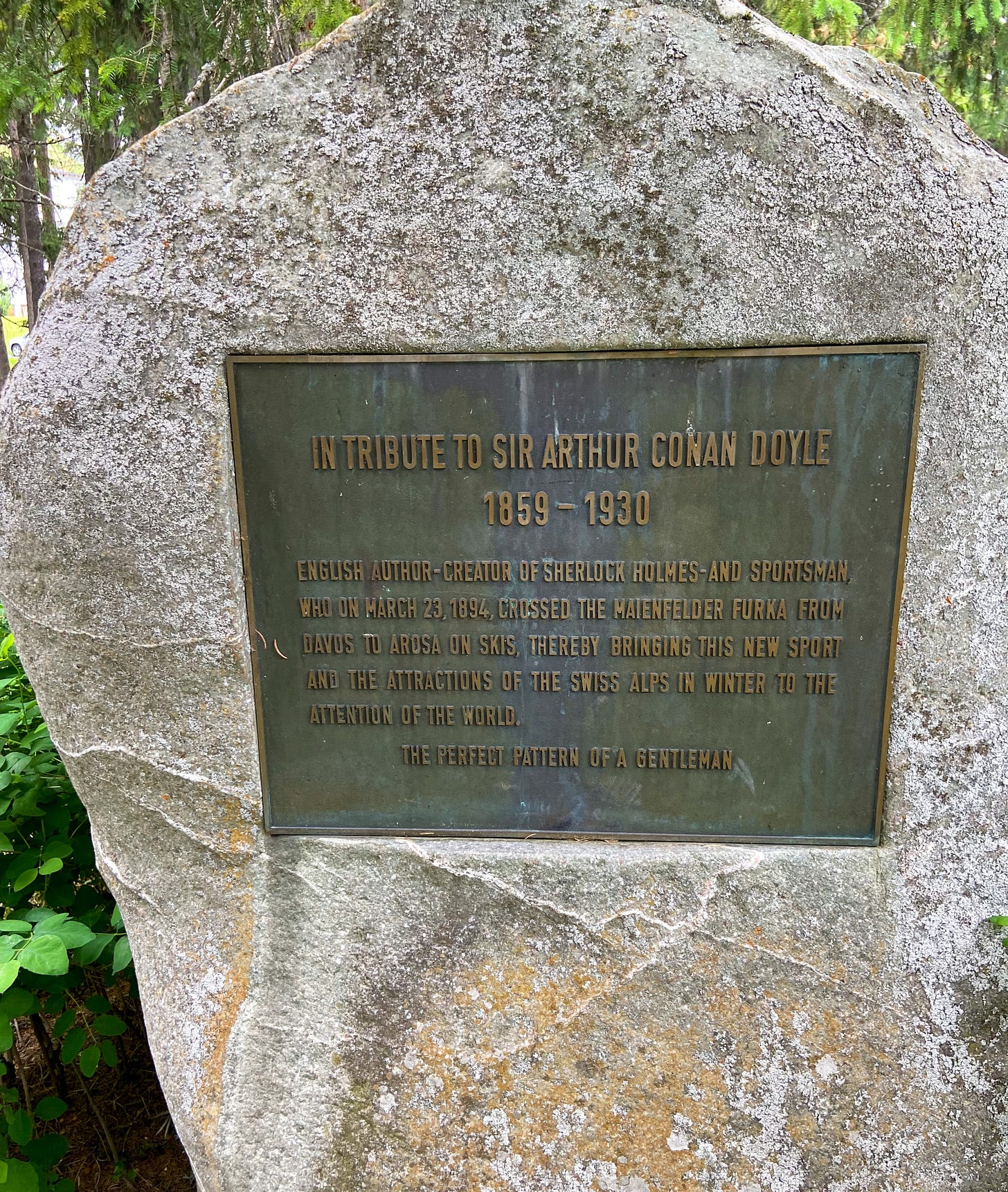
And finally…. Arriving in Davos!
(Yes, I know, it’s supposed to be Davos in the summer and yet it doesn’t look like summer, but that what the weather gods offered me on that day….)
Davos doesn’t look like your typical Swiss village, meaning, no chalets. This is because their tiny windows, which are designed to keep out the cold, also keep out the sunlight needed in the treatment of tuberculosis. So tiny windows out, large windows and terraces in.
Another difference is the so-called alpine flat roof, which is designed to protect against avalanches. Fun fact: the flat roofs are actually not flat! The melted snow does need a place to go to, after all.
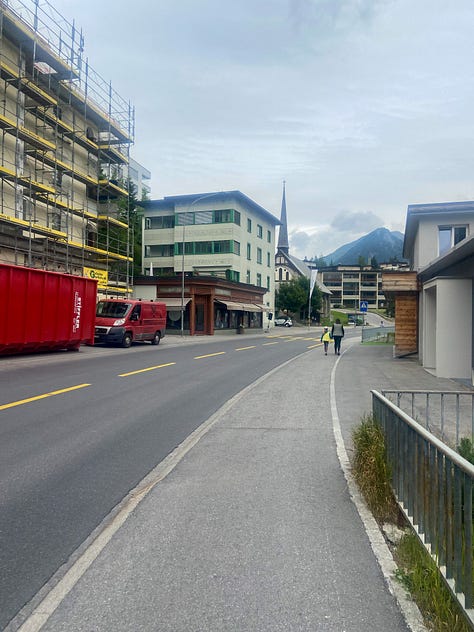
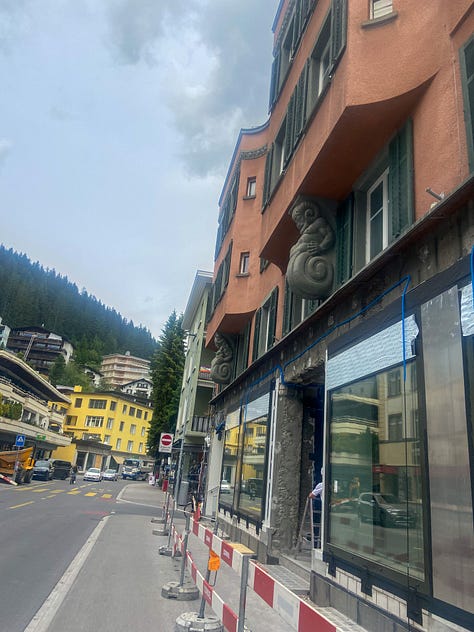
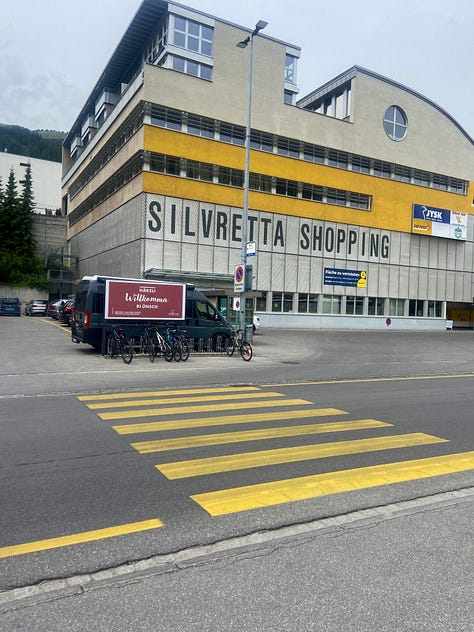
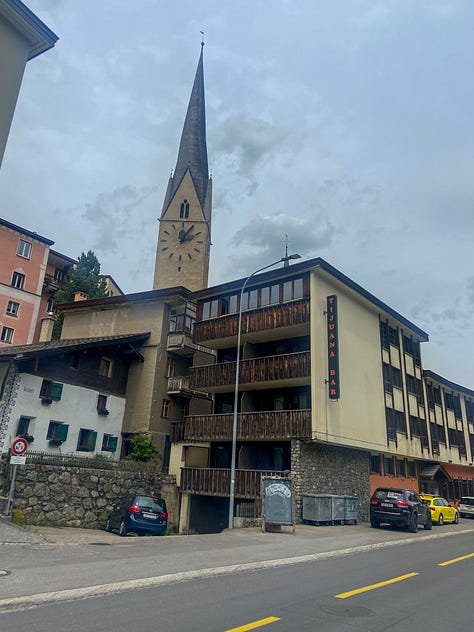
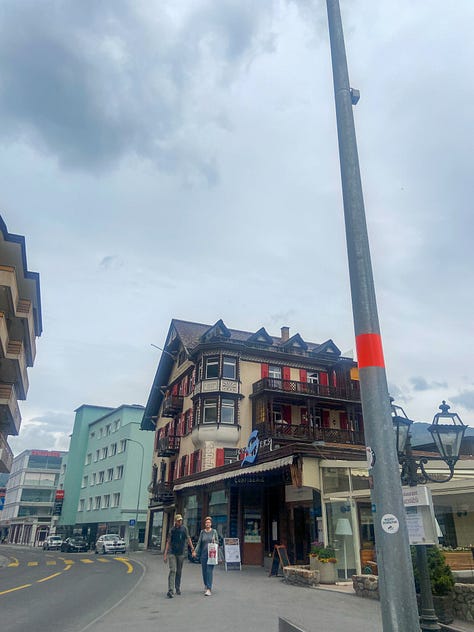
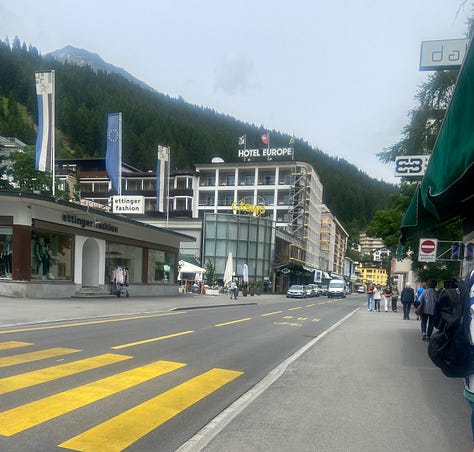
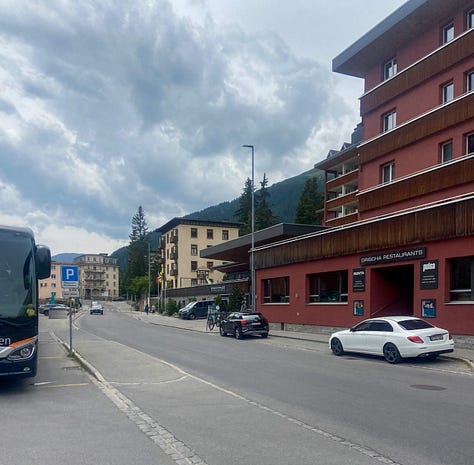
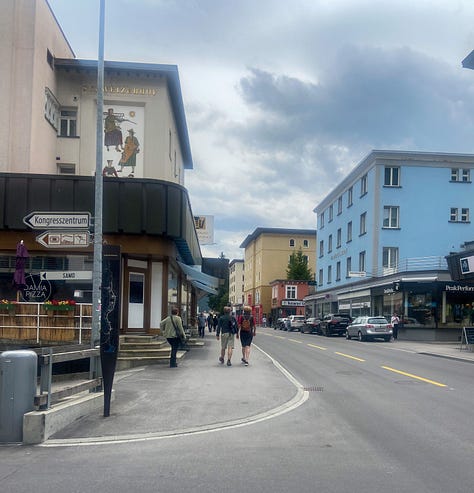

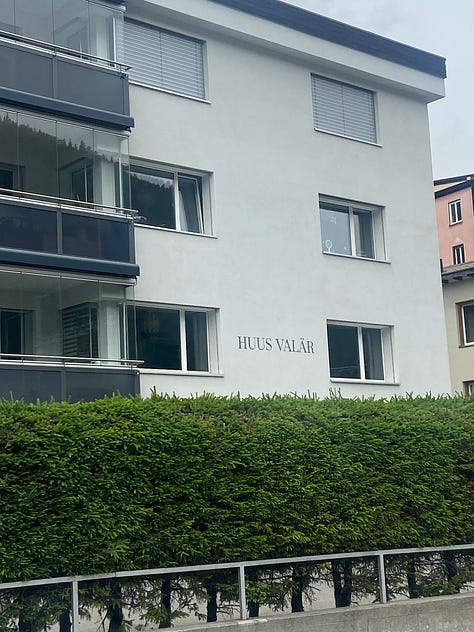
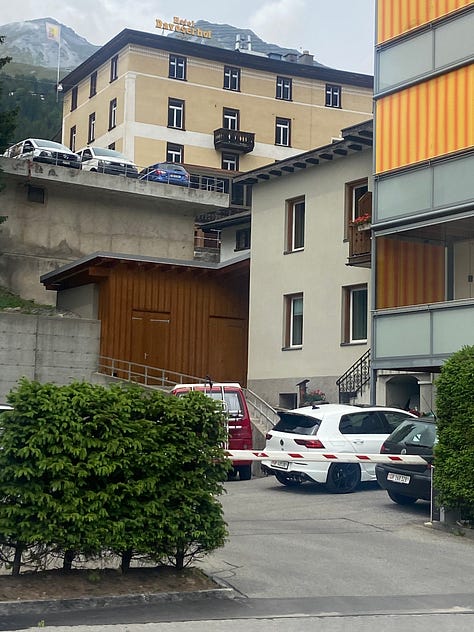
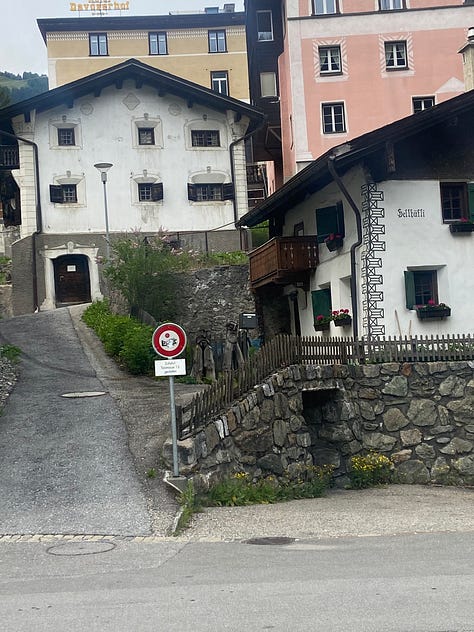


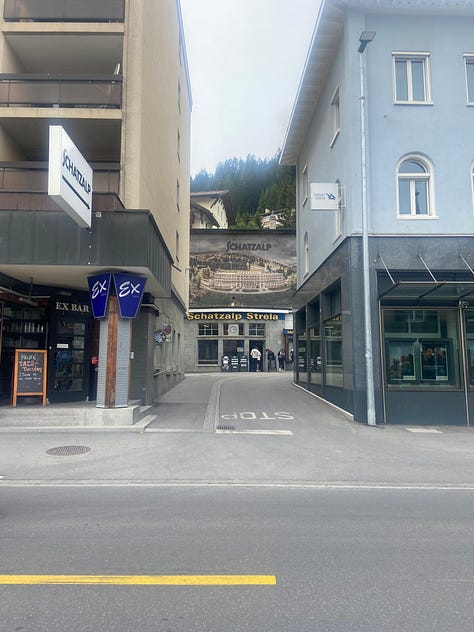
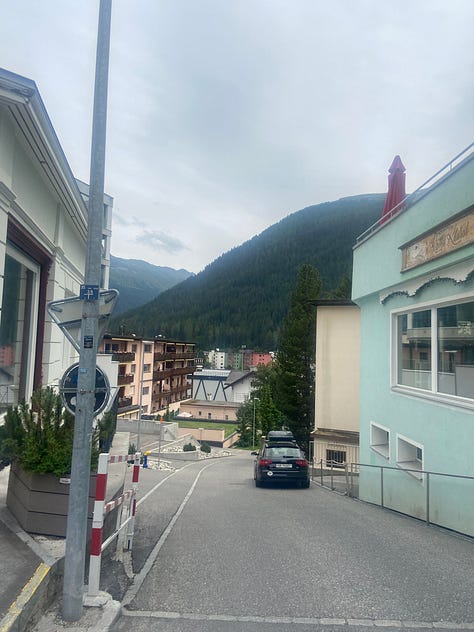
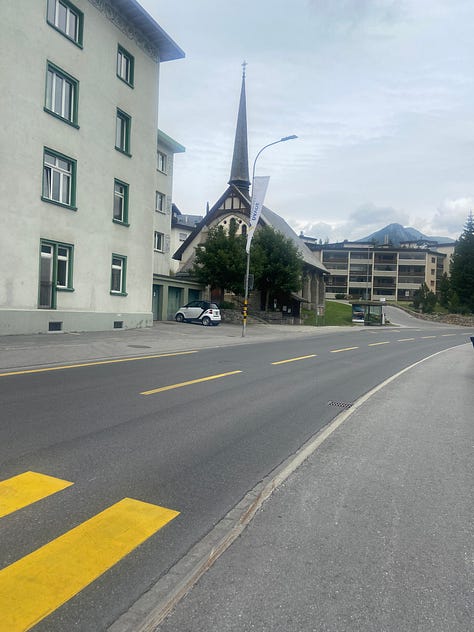
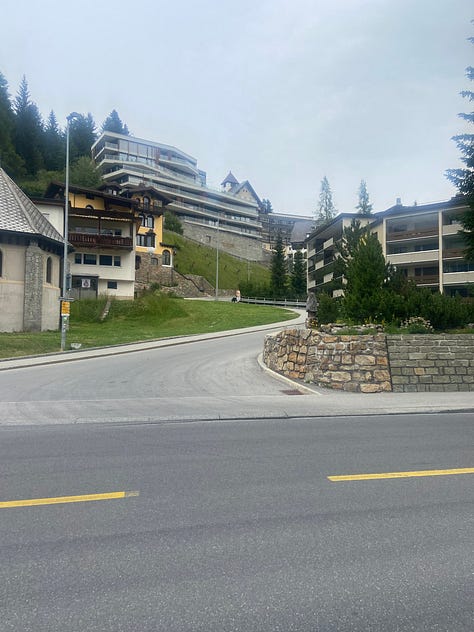
The Mythical Conference Center
After following the signs and checking Google Maps, I finally found the conference center. And I have to say, I was disappointed! When you read about it, they make it sound so glamorous, with all these powerful people parading down the promenade, and entering this all-important building. But instead, this was what I found:
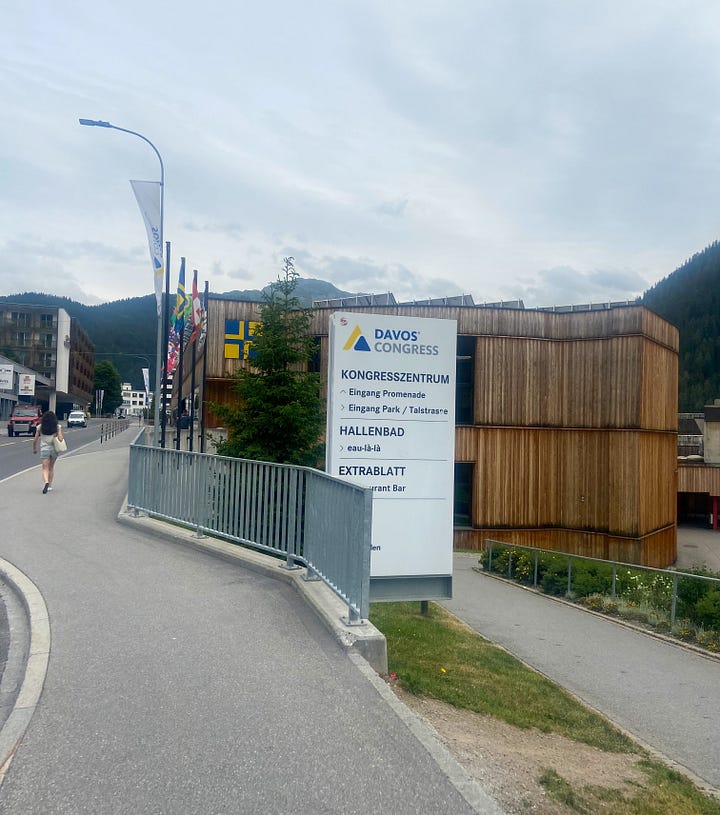
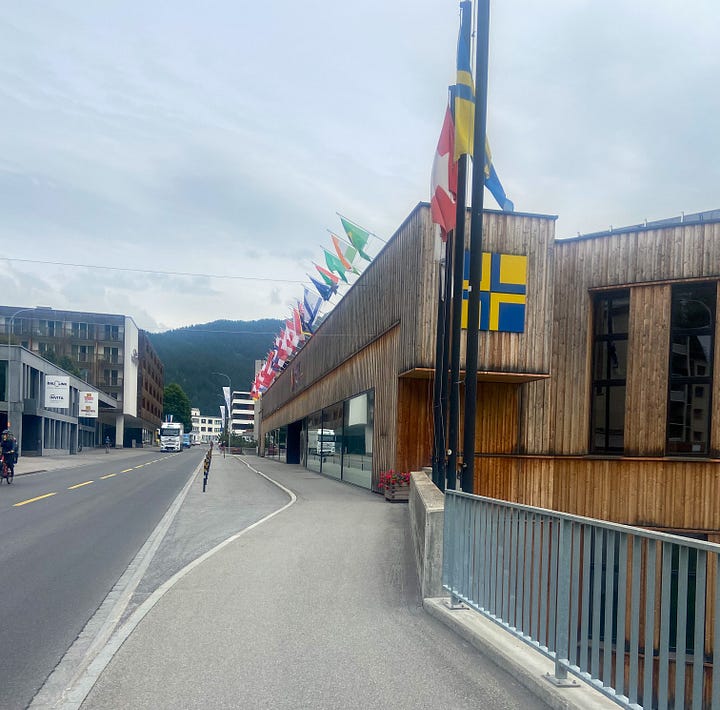
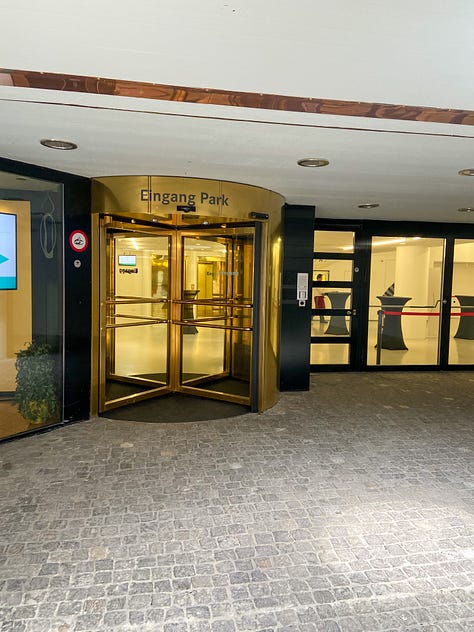

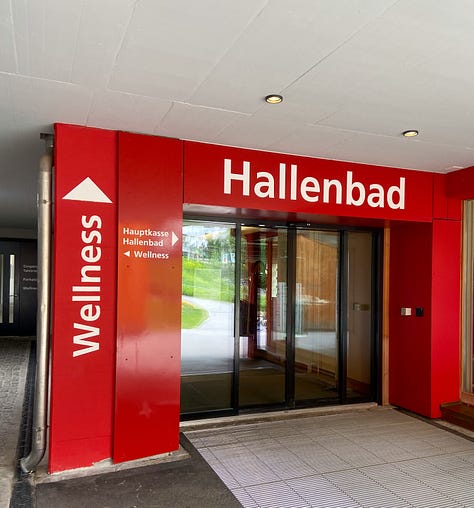
Before I reached a final verdict on the town and declared it not just far-from-charming, but downright ugly, I turned to the right at the lower level of the conference center and found the park below! It was as though the clouds had parted and the sun shined and the birds started singing and the flowers danced and the fairies frolicked in the pond with the unicorns. Thanks to its loveliness, and that of the surrounding natural beauty, I have to say that Davos is worth a visit!
Like all of Switzerland, to be honest.
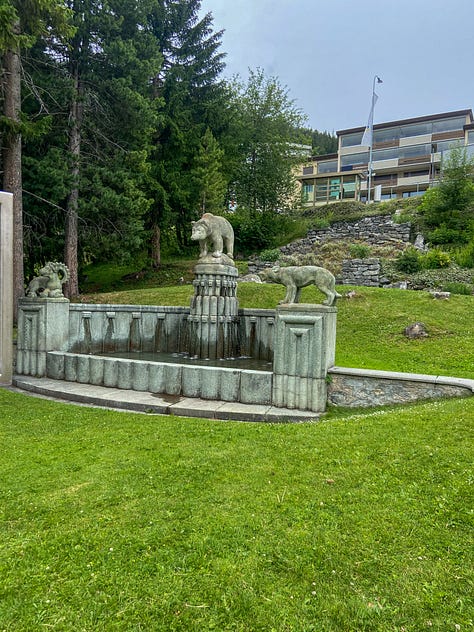
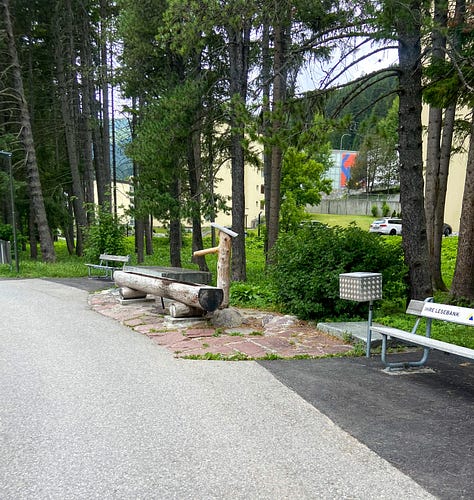
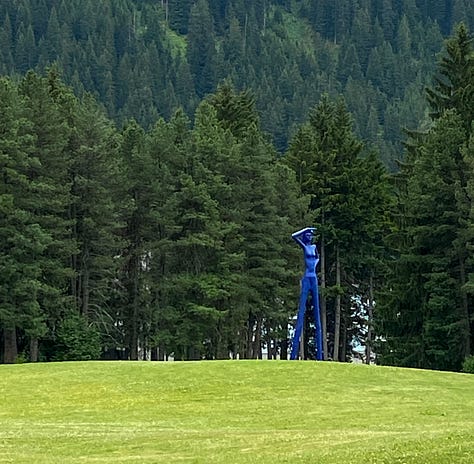
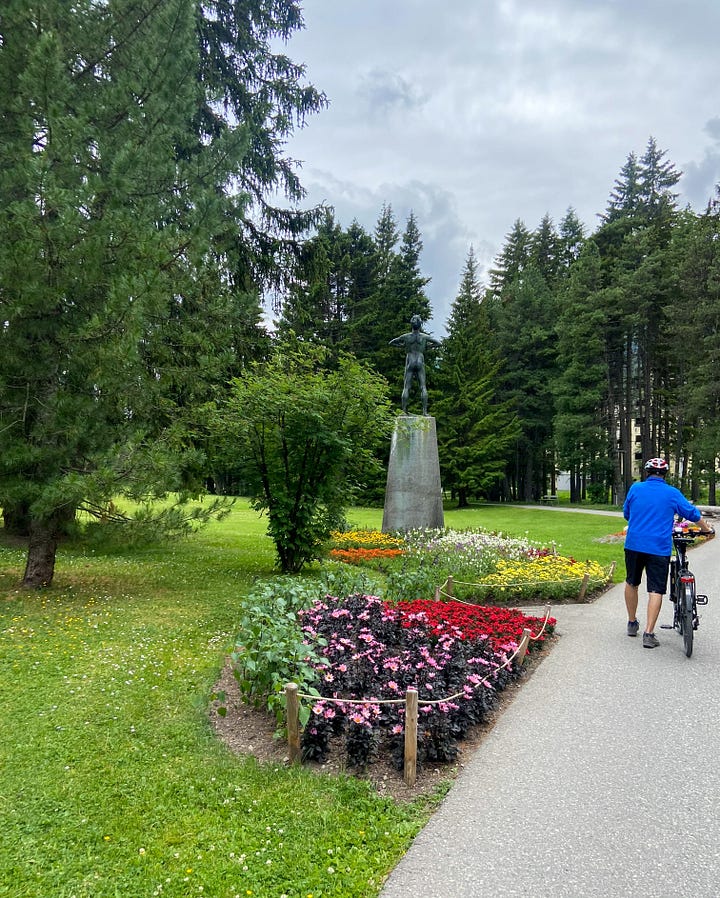
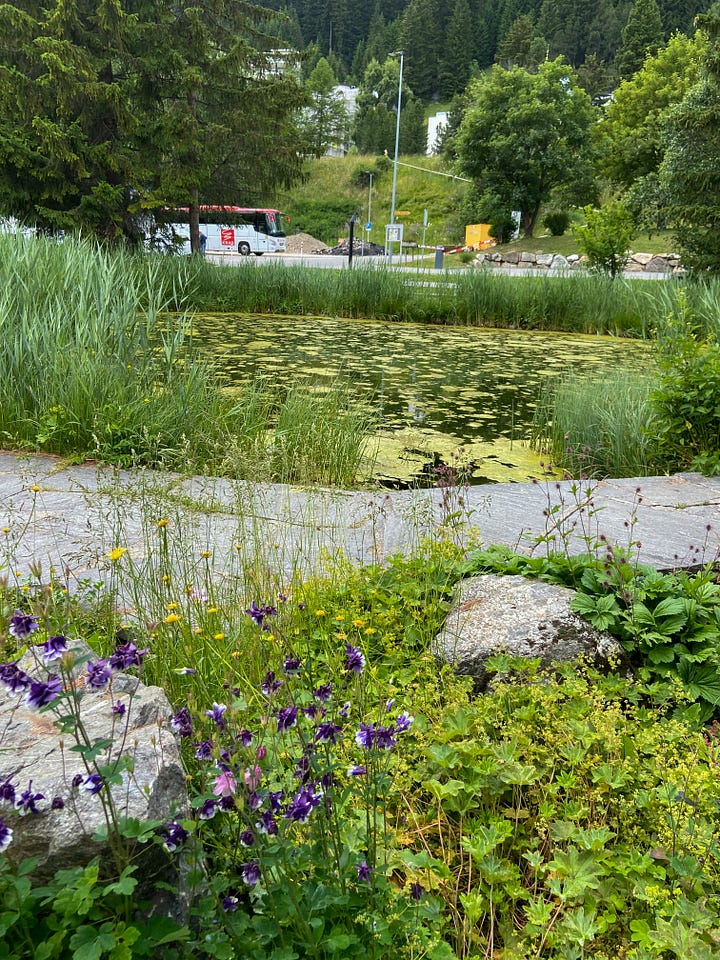
And that’s it! I hope you enjoyed this meandering, digression-laden, non-touristy look at Davos. I will continue to post similar looks at other towns I’ve been to to give you an unfiltered sense of what Switzerland really looks like. Let me know your thoughts below!



